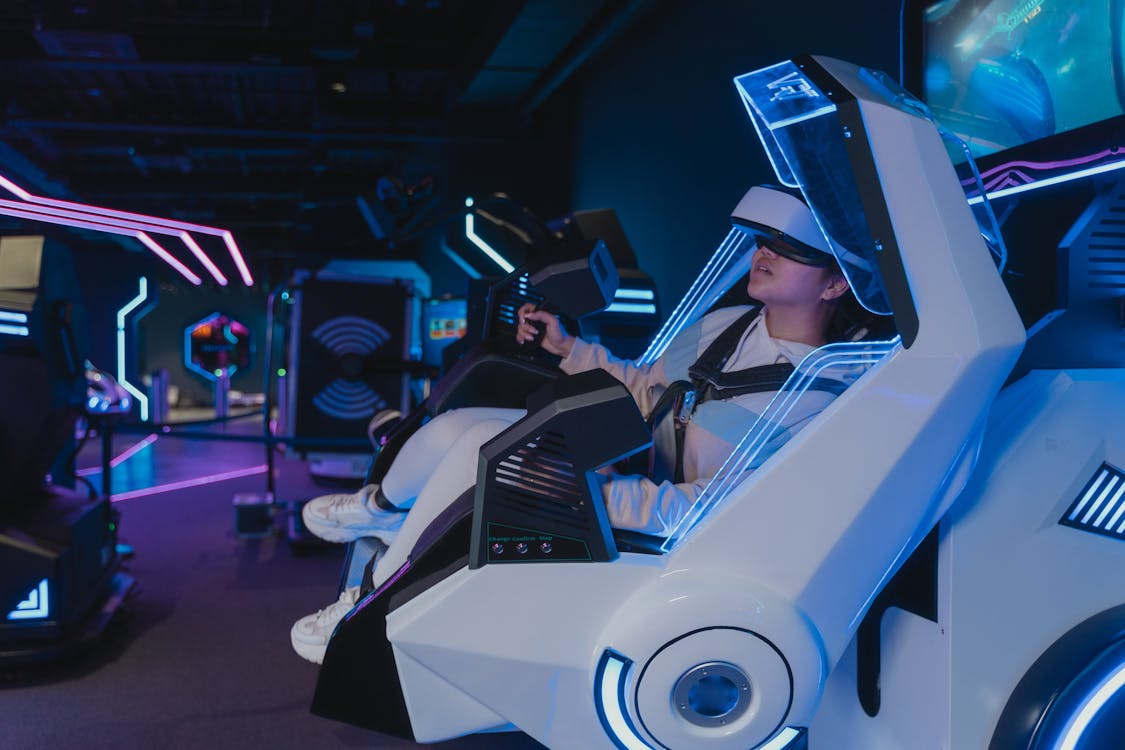AI in games isn’t a promise anymore — it’s here. And if you’ve been playing anything beyond casual mobile titles lately, you’ve probably experienced it without even realizing. It’s in the way enemies react, how quests unfold, how characters talk. Subtle, but powerful. Developers are no longer using AI just for basic enemy movement. Now, it’s helping build entire systems. For instance, AI Development Services are being applied in innovative ways to streamline game development workflows.
And I don’t mean in some “distant future” way. This is happening right now — in production pipelines, in testing tools, in content creation. What used to take days, AI can rough out in minutes. That doesn’t mean it replaces people. It means teams can focus on what matters: the part of game design that only humans can do well — creativity, emotion, surprise.
Table of Contents
ToggleFrom Dumb NPCs to Characters That Actually Feel Present
You probably remember the era of NPCs that stood still and repeated one line over and over. Those days are, thankfully, fading. AI has stepped in to make them more reactive, more contextual. Not perfectly human, of course, but definitely less robotic.
In newer games, some NPCs can respond based on your dialogue history. Others will shift tone depending on how you behave in the world. I’ve even seen cases where characters start referencing your past missions in ways that aren’t hard-coded. That kind of subtle continuity used to require a ton of scripting. Now? AI handles the edge cases. Writers still build the core, but the filler — the natural stuff — flows dynamically.
A good example of similar tech is how personalization happens in an online casino platform. When you play certain games more often, the system pushes similar offers or layouts. Not because someone’s watching — but because the AI is tracking patterns and adapting. Games are starting to do the same, just in more emotionally intelligent ways.
AI-Driven Worlds Without Losing Soul
Let’s talk level design. This is one of the most resource-intensive parts of building a game. Designers spend months laying out geometry, balancing line of sight, pacing enemy encounters. With AI, some of that work now happens in hours.
I’ve used AI-assisted tools that let me describe a biome — say, “foggy mountain with ruins and tight paths” — and it spits out five decent layouts. None are final, but they’re great starting points. It’s not magic. It’s probability mixed with training data. But it works.
What matters here is control. We don’t just let AI build and publish. A human still curates, tunes, trims. The art isn’t gone. It’s just been accelerated.
This approach reminds me of content engines used in crypto-betting spaces. Many crypto casino environments generate experiences dynamically: new skins, game types, lobby arrangements — all AI – guided to keep things fresh and engaging. Games now borrow this kind of thinking for user experience design too.
Smarter Testing, Faster Development
Not all AI in game dev is visible to the player. Some of it lives deep in production — stress testing, animation clean-up, even UI analysis. A lot of teams I know run AI models that simulate thousands of gameplay hours in just a few minutes. They find bugs, pathing errors, balance issues.
Voiceovers? AI now helps prefill placeholder VO, using cloned voices or dynamic synthesis. Animators get real-time motion corrections. QA teams receive auto-generated reports with visual cues. These tools don’t replace departments — they make everyone faster and less burned out.
In small studios, where time equals survival, AI is a lifeline. It can sketch a full feature pass so the team has something to iterate on. Without that, half those ideas wouldn’t even make it past concept.
There’s a funny parallel here: the way an online-casino-style system adapts odds, UI, and even payout timing to player input — developers now use that same responsive logic to adapt pacing or difficulty to how a player’s behaving. Subtle nudges, not scripted changes.
Don’t Let the Tech Outrun the Player
But here’s the catch. Just because AI can generate a dungeon or tweak a storyline doesn’t mean it always should. Games still need pacing. They still need moments that are authored, not just calculated. I’ve seen AI-generated story arcs that felt technically flawless — and emotionally dead.
The best games use AI to enhance design, not replace it. It’s like jazz: structure underneath, improvisation on top. If AI does too much, players feel disconnected. If it does just enough, they feel like the world knows them — but isn’t watching too closely.There’s also the ethics part. In online casino mechanics, AI is sometimes used to manipulate user behavior — pushing engagement, maximizing session length. That same temptation exists in gaming. Developers have to decide where personalization becomes pressure. Not everyone draws that line the same way.
Final Thought
AI in games isn’t a gimmick anymore. It’s a tool — powerful, fast, and flexible. When used with purpose, it saves time, amplifies creativity, and helps small teams punch way above their weight. The goal isn’t to automate design. It’s to clear the road so designers can spend more time doing what they’re good at: making something that feels like it matters.
That’s the version of AI I trust. And the one worth building with.





